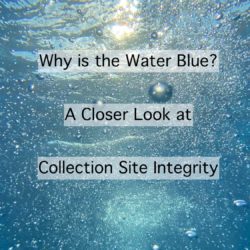This information is provided for educational purposes only. Reader retains full responsibility for the use of the information contained herein.
What is a Collection Site?
A collection site, or collection facility, is the location where a sample is given to begin the drug testing process. The most common types of samples used for workplace drug testing are urine, saliva, and hair. Most sites provide urine collection services, but not all collection sites offer the same types of sample collections. Collection sites are often fixed locations, but many collection organizations additionally offer mobile services to accommodate and support a wide variety of employer needs.
Selecting a collection site is not always as simple as finding a site that offers sample collections. Employers must ensure that the site is able to fulfill all regulatory requirements they may need. For instance, if an employer is testing employees that fall under Department of Transportation (DOT) rules and regulations, those collections must be performed by DOT-certified collectors. Other rules and regulations need to also be considered prior to selecting a collection site (e.g., specific state requirements), so it is critical for employers to know what requirements are applicable. Regardless of what rules and regulations apply, the integrity of the collection process must be maintained from start to finish to achieve accurate and reliable outcomes.
What Does Collection Site Integrity Mean?
Employers who utilize drug testing programs are typically interested in fast and reliable turnaround times for results. To achieve the desired outcome, errors must be minimized, and necessary steps must be followed during the collection process. The sample collection is the beginning phase of the overall drug testing process and can set the stage for how quickly a result becomes available.
Most collections, regardless of whether they fall under federal or non-federal requirements, will use some version of a Custody and Control Form (CCF). The CCF is a multi-part form listing important information for each collection, including information pertaining to the employer, Medical Review Officer (MRO), donor (employee), collection site, collector, and other specific details about each test. Characteristics of the sample such as color, temperature, or other noteworthy information can also be recorded by the collector. However, any information that is omitted from the CCF can lead to delays at the laboratory and/or the medical review process, ultimately having a negative impact on the desired turnaround time. But accurate CCFs are not the only area of focus to maintain the integrity of the collection process.
Why is the Water Blue?
If you have ever been required to submit a urine sample for a drug test, there is a good chance the water in the toilet bowl was dyed blue. Blue water is designed to thwart an individual from attempting to dilute or adulterate their urine sample by adding toilet water to their collection container, but this is only one of many steps a site will use to maintain the integrity of the collection process. In addition to adding a bluing agent to the water, access to the toilet tank must also be restricted. This may be done with a lock or use of tamper-evident tape. The restroom may have cabinets or loose ceiling tiles that could also be used to conceal contraband, so access to these areas must also be controlled.
Moving outside of the restroom there are even more measures taken to maintain integrity. In most cases a donor’s identification will be confirmed by the collector, and the collector will proceed to instruct the donor to remove any extra clothing on their person. Donors may attempt to camouflage a potential adulterant on their hands, so they are asked to wash their hands prior to providing a sample. If a donor has any items in their pockets, they are typically asked to leave those items in a secure area outside of the restroom and can recover those items once the sample has been provided. Collectors will also check the temperature of a sample to verify that it is within an acceptable range. Once the collection process is complete, the CCF and sample are sealed in a tamper-evident bag prior to being transported to the laboratory.
How does Collection Site Integrity Apply to Alternative Sample Collections?
Although urine testing continues to be the most common method of drug testing, many employers are opting for alternative sample testing for their drug testing programs. Oral fluid and hair testing continue to grow in popularity, though the same security measures that are used for urine are typically not needed for these alternative samples. These types of collections usually fall under non-federal requirements so the lab or collection kit manufacturer should be referred to for best practices.
How Important is Collection Site Integrity?
The aforementioned measures contribute to a desirable outcome as it relates to the collection process. If a collection site or a collector fails to adhere to the applicable rules and regulatory requirements or ignores security measures effectively compromising the integrity of the entire collection, a drug testing program simply will not be reliable. Missing information or sloppy handling of the collection process can lead to longer turnaround times, or worse, canceled tests which often require the collection to be repeated at additional costs to the employer. The drug testing process begins with the collection of a sample, and the integrity of this process must be maintained to meet employer needs and expectations.



